#animal care
Text
How we weigh an octopus!
154K notes
·
View notes
Text
Abdallah is an under appreciated hero in Palestine doing everything he can to care for and feed the animals around him.
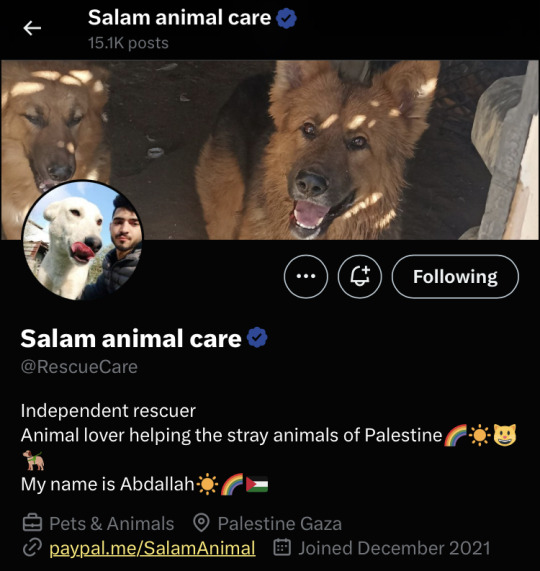
Despite the horrible situation the Palestinian people are in, so many of them are taking care of animals just as much as their fellow humans. If you have anything to give, please consider donating to his PayPal and help him care for these innocent beings.
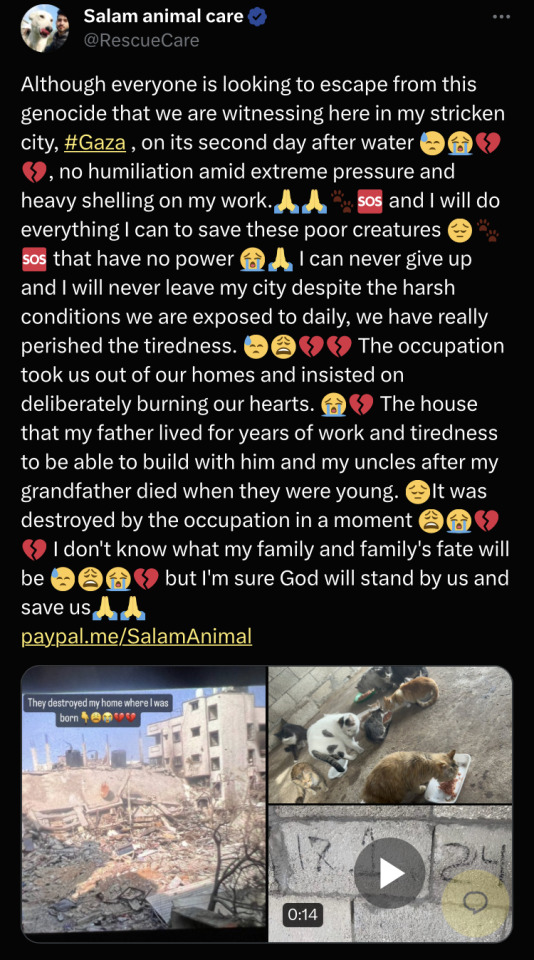
If you are unable to donate then please PLEASE reblog and share. He is a very kind soul and grateful for all the support he gets
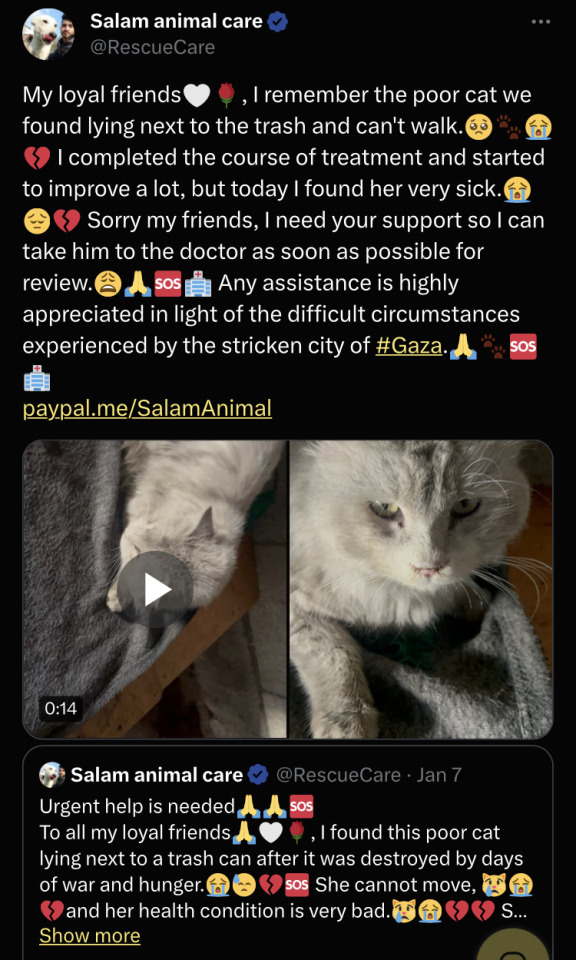

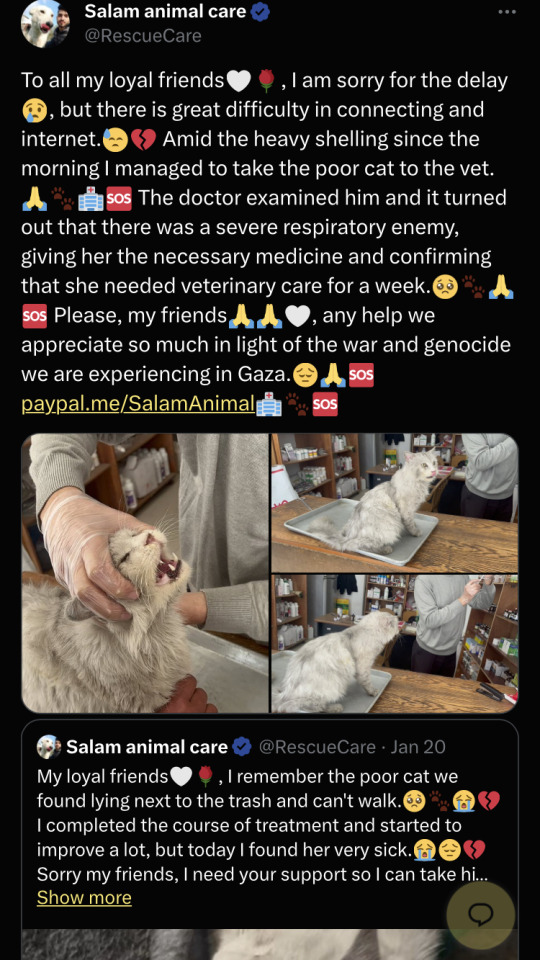
He genuinely does everything he can for them, do at least the bare minimum for him.
#free palestine#free gaza#palestine#palestine resources#support palestine#donate to palestine#animal care#ceasfire now#from the river to the sea palestine will be free
15K notes
·
View notes
Text
As someone who works w animals “animals are not mindless automatons, they actually do have feelings and individuality and are capable of feeling acute physical and emotional pain and of forming deep attachments with other animals and people” and “animals are not human infants and have a limited capacity to communicate with humans so you have to familiarize yourself with their boundaries bc if they feel threatened or overstimulated they will fall back on their basic instincts and if you fuck around you are going to find out” are statements that can and should coexist
#why is this so hard for ppl to understand#yes they’re capable of genuine love and empathy#no that doesn’t come with an endless supply of patience for human bs or a complex understanding of human motivations#bc they aren’t just here for human consumption they’re literally vibing#animal rights#animal welfare#animal care#animal exploitation
47K notes
·
View notes
Text
Distractions
4K notes
·
View notes
Text
To continue the theme of "wtaf is up with that sanctuary that feeds bears Twizzlers and camels Mountain Dew", here's another recent social media post I find rather concerning. Who the heck is giving cheetah - vulnerable animals with a very small population - to a sanctuary that is rabidly, openly anti-zoo and anti-conservation breeding?

The reason this stands out to me so much is that there just like... are not cheetah in sanctuaries in the US. Most cheetah in the US are part of a breeding program, either AZA's SSP or ZAA's AMP - it's not common to find them in even unaccredited zoos, much less newly moved to sanctuaries. Of the 400-some cheetah I found doing the big cat census in 2020, there were less than 10 in facilities that branded themselves as sanctuaries. So where did these cats come from?
What's more, okay, there's no trace of these ladies on social media before now. The Wild Animal Sanctuary is normally very open about their acquisitions, and no facility they've gotten animals from since their last USDA inspection has had cheetah. I haven't heard about any imported cheetah recently either, which is another thing you can check for this facility, because the majority of their rescues are imported from all over the world.
There's another weird thing about this post, too. Look at the language. It's all very "here's a cheetah! they're very happy outdoors in their nice habitat." And if you're not facility with this institution and their messaging, you might not catch why that's odd. This facility emphasizes, in every post they can, that their animals are rescued from horrible no-good very-bad abusive situations. Normally they name and shame if they can, or talk about how they came from the cub petting industry or private exploitation or such. There's none of that in this post, and it stands out because of it - especially because it's the first time these very rare, very charismatic big cats are being shared with their audience.
So where the heck did these cats come from?
Whelp.
Turns out the answer is AZA-accredited zoos. And whew, man, does that raise some questions.
Luckily these girls have some pretty distinctive names, so I was able to find them in the international and regional cheetah studbooks pretty easily. For both cats, the most recent listing in the studbooks was at AZA-accredited zoos in Texas: in 2020 Dahlila was living at Caldwell Zoo, and in 2022 Jaina was at Fossil Rim Wildlife Center.
Now, we don't know for sure that Caldwell and Fossil Rim are the facilities that chose to dump their cheetah in a sanctuary. There's some important context to know about exotic animal ownership and how animals leave AZA SSPs. General practice is that large charismatic mammals aren't bought and sold at AZA zoos, especially SSP animals, so animals sent out to other facilities for breeding or exhibition are moved around on loan. Sometimes their ownership changes with the transfer, but not always - it really depends on the species and how much control each facility wants to have over their animals. On top of that, the ownership of offspring sometimes alternates by litter or individual between the institutions that own the parents. When they're part of a cooperative breeding program none of that matters very much because all the animals are managed as a single population and moved as required for breeding and to fill empty display spaces. Where it's relevant is when an animal is removed from the SSP population - at that point it's totally up to the facility that owns it to choose where they live, as long as they send them somewhere AZA agrees is providing a reasonable standard of care. (This will be important in a little bit.)
So what we can tell from this situation is that Jaina and Dahlila were, for some reason, probably excessioned from the SSP in the last couple years. And whichever AZA facilities owned them decided to send them to The Wild Animal Sanctuary instead of finding a display-only placement at a zoo or safari park or similar facility.
Since I started writing this post, TWAS confirmed the origin of these girls in a Facebook comment.

I have real concerns about what appears to be an emerging trend of exotic animal exhibition facilities using sanctuaries as a "dumping ground" for their elderly or extra animals, in order to prioritize space for breeding or more desirable animals. I can't prove it yet, but there's been just enough weird transfers to have caught my attention. (In some cases, there's a good reason - sometimes all the habitats designed for the physical needs of elderly animals of a certain species already are full, and it's better for them to go somewhere they can exist more easily rather than trying to retrofit their current habitat - but it isn't every case). And here's the thing: many sanctuaries, like TWAS, message about how they have to exist to take all the discards from the zoo industry. In recent years that hasn't really been accurate, and historically, it did happen but not as commonly as it's portrayed. So... if that's true... and it's a bad thing... why are sanctuaries encouraging it by taking the animals zoos are transferring out to free up space? You'd think they'd want to say "find space in your own institutions and only call us if there's a crisis." (Money. The answer is money. Every new intake is used for marketing and drives additional donations.) Heck, why are zoos playing into that narrative, when they're frequently rebutting attacks claiming they discard the animals that aren't useful or aesthetic anymore?
All of this actually makes a lot of sense given how short on space all the AZA SSP programs are. Both in general, and for big cats, there are not enough spaces across accredited zoos to hold all the animals needed for sustainable populations. (This is why AZA just recently re-imagined their SSP programs, which is a whole other complicated mess that I am working on a writeup about). Recent political shifts within AZA corporate leadership have also discouraged collaborations between AZA-accredited zoos and non-AZA facilities, so while 20 years ago it would have been fine to move extraneous / non-breeding cats to smaller unaccredited facilities for display, that's less of an option. Which leaves sanctuaries as kind of the only politically appropriate option. This would also explain why the text of the post is so weird: there's probably a contract in place to prevent using their images to bash zoos.
The problem with sanctuaries as a solution for housing extra animals is, well, the quality of care they provide. If you haven't seen me say it before: sanctuaries are as varied in their expertise and function as zoos. In the case of The Wild Animal Sanctuary (and their other facilities, like the Refuge these cheetah are at) everything I have learned about them indicates that their animal care is highly questionable. Which is a problem, because - as mentioned earlier - AZA-accredited facilities are required to follow a responsible population management policy, which means ensuring that animals they send outside of AZA go somewhere that gives them high-quality care.

TWAS is an organization that prefers to feed big cats at multiple facilities frozen meat puree "frisbees" by chucking them over the fence. They don't have any way to separate co-housed cats to prevent conflict during feeding or resource guarding, because they don't build their enclosures with any sort of shift or lock-out areas. It's also unclear how they remove food waste without a way to shift animals out to go find it. (For bears they drive in on a truck into the habitat and then go on foot to clean, but I don't know if that's done with the big cats once they’ve been released from quarantine pens.
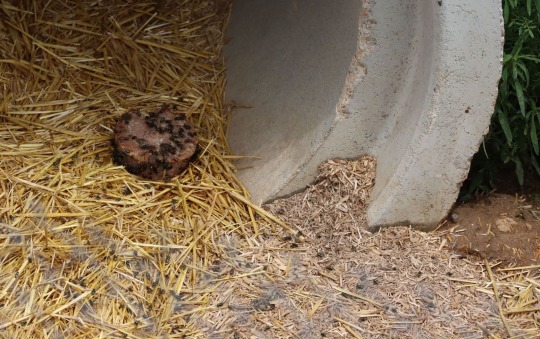
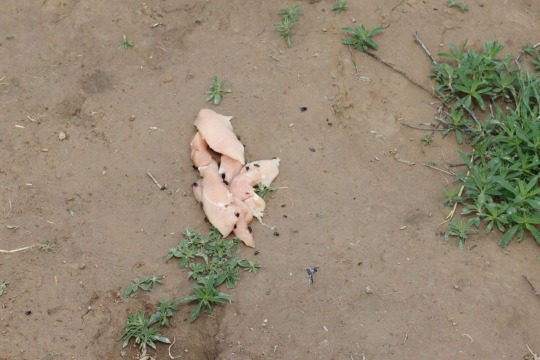
(These are my photos of food in carnivore habitats at TWAS this summer. Given the pest accumulation on the meat frisbee and the fact that I visited early in the day, it seems probable it was at least a day old.)
This is an organization that is ethically against training their animals for any reason: it's literally written into their statement of purpose as a “true sanctuary.” It's also described below, in a recent book published about the facility.

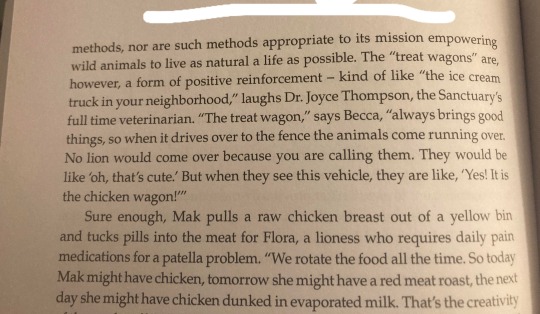
That policy means these cheetahs will not have a recall behavior, will not be trained for medical examinations or as a way to lower stress for procedures, and will not get the mental enrichment and interaction they're used to from regular training sessions. According to the book, medications are delivered on a long spoon / tongs tucked inside the cat equivalent of a pill pocket. (Which anyone with a pet cat knows falls apart as a plan if they're sick enough to not feel hungry).
I'm pretty sure there's no heated shelter for the large carnivores or bears at TWAS. The main shelter for animals at the Sanctuary is single-entrance concrete culverts buried underground far enough they're supposed to maintain a constant temperature all winter.

Sounds nice in theory, but with no second exit animals can get trapped down there, and there's no way to monitor them when they're inside. I don't know what type of shelter the Refuge provides, but it probably isn't much different. Even the quarantine spaces - smaller outdoor kennel-type pens with three exposed mesh panel walls - have no heat, and just an above-ground culvert block for them to curl up in. While cheetah are surprisingly adaptable to cold weather, winters in Colorado can be very harsh for prolonged periods of time.
As far as I know, most of the animals at facilities TWAS runs don't get regularly changed, novel enrichment. I've certainly never seen much in the habitats other than climbing structures when I've visited their main facility over the years, and most of their messaging around “toys” is semi-permanent furniture like giant telephone wire spools or a suspension bridge for climbing. I think some of the bears get balls? The messaging from TWAS is that their animal care is better because it's close to a natural life in the wild. Animals can be animals! When returned to their wild roots, animals shouldn't need anything from humans and are happier that way, etc.
When animals come to the Sanctuary (or the partner facility, the Refuge) they're literally chucked into a big fenced-off piece of land and left out there to "be cats" without human interaction except for feeding time and observations. Which is the polar opposite of what these cheetah are used to! AZA cheetahs, even those that aren't program animals, are intensely managed. They're used to regular human contact, frequent training, and constant enrichment. So what's "normal" for a wild cat is a far cry from what these cheetah girls have always known. That's not better - that's a loss of quality of life.
I don't understand how moving animals to places like TWAS is in line with AZA's Responsible Collection Management policy. I don't understand how AZA facilities think the type of husbandry the facility describes providing is acceptable. If another zoo utilized half the same care practices, they'd be drawn and quartered by their industry peers as well as by the public - and rightfully so. I don't understand why anyone wants to send animals there, based even just on what's easily observable. I don't have more information or really a conclusion, just that’s what's observable from an external vantage point is upsetting as heck and I worry for those cheetah girls.
#big cats#cheetahs#animal welfare#sanctuary politics#zoo industry politics#animal care#AZA#long post#this originally said cheetah are highly endangered which was a fact checking error#updated it to reflect that#bug tw
1K notes
·
View notes
Text
Car’s engine is running
Source: instagram.com
#cat#cute#animals#lol#funny#aww#wholesome#everythingfox#pet care#pets#baby animals#cats of tumblr#pet#caturday#animal#kitty#cats#pet health#animal care#pet ownership#animal behavior#dog training
151 notes
·
View notes
Text
With Easter approaching, just a little PSA not to buy or give rabbits for Easter.

Yes, they're very very cute, and yes, you can get some adorable pictures of them in Easter baskets. But rabbits are not toys. They are little living beings. They need to be cared for and not discarded. They are not starter pets, and they are not good pets for children. A child cannot be the primary caregiver for a rabbit. They're very fragile, have complicated diets, and can be quite expensive. Rabbits can live to be 10+ years, they are not a short term commitment. They are not low maintenance, and can't live in the kind of cage you most often see advertised for rabbits. They either need a large exercise pen or to be free roamed, aka let them live in your home with you like you would a cat or dog. They are very easily litter trained and can become a member of the family just like any pet if taken care of properly.
Rabbits are very social animals and require a lot of attention, they can't be left in a small cage until your kid comes home from school or you come home for work to play with them for an hour. Rabbits are also not cuddly. They're prey animals, and slow to trust. Getting picked up scares them and they need a lot of time to warm up to you. A rabbit that's constantly picked up or grabbed can become aggressive out of fear, you need to approach them differently than you would cat or dog.
The majority of rabbits given as Easter gifts are either surrendered to shelters or abandoned outside. Please please never set a domestic rabbit free in the wild. Domestic rabbits are not wild rabbits, they do not know how to survive. They will likely die within days of being released.
They can be wonderful pets, but there is a lot of misinformation and misunderstandings about how to care for them, and there are a lot of abandoned rabbits. Most toys and treats marketed for rabbits in pet stores are actually not safe for them.
If you are considering getting a pet rabbit, I am begging you to do your research. Understand the commitment for what it is. A few great resources for learning about proper rabbit care are:
The House Rabbit Society
The Bunny Lady
Sincerely, Cinnabun
101 Rabbits
#yes the bunny in the picture is mine#and yes I put that there to get your attention with the cute bunny and hope you stayed to read the rest#if you did read the whole thing thank you#don't buy rabbits for easter#easter bunny#easter#easter bunnies#easter rabbit#bunnies#rabbits#bunny#rabbit#pet bunny#pet rabbit#shelter rabbit#shelter bunny#house rabbit#free roam#free roam rabbit#rescue animals#animal awareness#psa#animal psa#rabbit care#bunny care#pet care#animal care#easter psa
62 notes
·
View notes
Text
So, I finally got the apartment I’ve been waiting for after being on the waiting list for 9 months. Unfortunately, they were kind of dicks and gave me about 2.5 weeks notice. I had just spent all my extra money on kittens, but I’ve been able to scramble and borrow and arrange payments to paychecks in such a way that all my move in costs are covered.
However, this doesn’t leave any room for “nonessentials” like food and vet visits. The kittens need their next set of shots, and it can’t be delayed because they have to be given a certain amount of time apart. Additionally, Bella’s expensive prescription dog food is about to run out (I can’t feed her regular cheap dog food because she has gall bladder disease and it’ll literally kill her like her mother went).
So. I need about $350 by November 10th, for these things! Anything over will go to feed me, but I can probably subsist on the food bank for a couple weeks if I have to. Any boosts are a help, even a dollar is a dollar more than I had before. I really appreciate how everyone has come together for me in the past, sorry to have to ask again.
$0/$350
Venmo: https://venmo.com/u/TheBookewyrme
PayPal: https://www.paypal.me/LiaWolff05
Cashapp: $TheBookewyrme
As payment, I offer pics of the miscreants in question!
Miscreant #1

[Image ID: a grey kitten sits on a messy desk with books and papers piled around him. A computer screen is on the right side. /end ID]
Miscreant #2

[Image ID: a orange and white kitten lays on his back with his back pays in the air clutching at an orange toy on a string and looking at the camera. /end Id]
And not a miscreant, only the goodest old girl!
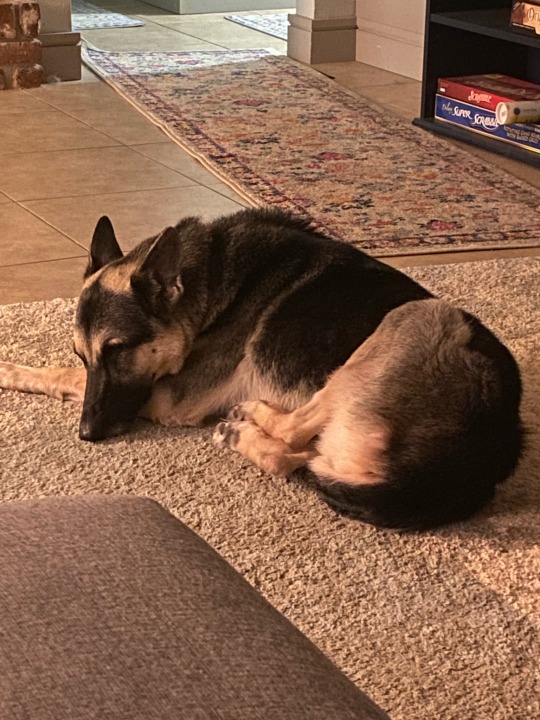
Image ID: a german shepherd curled up on a rug. /end Id]
#trans crowdfund#crowdfunding#mutual aid#animals#animal care#vet bills#kitten Yuan#kitten Binghe#kittens#german shepherd#please boost
103 notes
·
View notes
Note
Hard agree about mammal bias in pets. There’s a whole attitude of “it’s just a fish” and a whole host of ethical issues within the fish keeping community because fish are seen as less than animals like cats and dogs. From keeping large fish (giant gourami, pacu, iridescent sharks, etc) in home aquariums at all—they’re not nearly big enough for the size these fish get—to seeing fish in general as ornaments rather than living things that need to be appropriately cared for. Every time I see a betta in an unheated, unfiltered bowl or a goldfish given away as a prize, a part of me dies inside.
FOR REAL
I love the aesthetics of fish tanks, but when I did my research into how much work it takes to care for fish, I decided they were too difficult for me to do so.
I own parrots. I think fish are harder to care for than parrots. And I have receipts.
People who properly care for their fish are heroes.
164 notes
·
View notes
Text
Zero waste pet ownership is a great thing to aspire to. Stick to safe, all natural toys made with renewable and compostable materials. If and only if your vet says that it's safe you can make food from scratch, or find some pet food bulk bins. If your cat is agreeable, use pine pellets for litter. Et cetera.
But it's 100% ok if that's not something you can do. My dog's favorite toy is made of polyester, and my cats only eat food that comes in non recyclable bags. And that's totally fine, because you have to recognize one thing: these animals' lives are our responsibility. Sacrificing their health, safety, or happiness for a tiny amount of difference in carbon use is not ok.
Understand that your priorities must be well aligned. This extends beyond pet care, and to all different kinds of consideration towards animals. It's fine to be vegan, but remember that all "vegan leather/wool" is plastic, and its production and degradation are terrible for the environment and the animals in it. It's great to focus on a plant based diet, but you must remember that the purchase of out of season fruits and vegetables create more waste and carbon emissions than simply buying local. There's nuance to all this, and you must have patience for both yourself and others.
Love your pets, and breathe easy. There's plenty of other aspects of living where you can prioritize a low impact lifestyle, without forsaking our beloved furballs.

#zero waste#sustainability#anti consumerism#anti consumption#eco friendly#sustainable#environment#pets#pet care#cats#dogs#cat#dog#animal#animals#animal care
82 notes
·
View notes
Text
Ever seen a turtle dance? 🐢🕺
Lou really enjoys his "scrub hut" inside our Soft Coral Garden.
Video by Aquarist Celeste
3K notes
·
View notes
Text

All About Boas and Other Snakes by Mervin F. Roberts (1975).
502 notes
·
View notes
Text
Today’s pet note based off an extremely stressful phone call with a relative last week and a slightly frantic phone call with my vet today (frantic from the vet’s side, not mine, my cats are currently okay):
Please, please, please do not give your cat (or dog or other pets) human medication. It will poison them. If you have, please take your pet to the vet for blood work to make sure it hasn’t damaged any vital organs. Don’t do OTC medication. Don’t do essential oils. Don’t do the activities you would do to manage your own self-care and health even if you think, “Well, this helps me and I want to help them, so this will work!” Maybe you did it before and you saw no visible harm and thought you saw improvement! If you poison your pets, you’re often not going to see an immediate result: it’s going to build in their system, and if it doesn’t kill them quickly, it will shorten their lives and probably cause long-term health issues.
There was a story about a woman who kept using menthol on her baby for her baby’s cough and didn’t understand why it wasn’t helping, so her response was to keep using the menthol, because it worked for her, so obviously it should help with the baby! Instead, it was drastically making the situation worse. Don’t do this.
Veterinary Partners is a good website! If you have questions, check them out! They also give more detailed information about what happens when you give your pet human medication. Please check out vet sites and not general websites. Those websites tend to be less “survivor” bias and more “I didn’t see this immediately kill my pet” bias.
61 notes
·
View notes
Text
That's not how cats sound
#animal control#animal shelter#animal care#veterinary assistant#vet med#vetblr#cats#veterinary medicine
274 notes
·
View notes
Note
I'D LIKE TO HEAR ABT MILLIPEDES .... 👀
I love millis so so much, I want to keep some as pets one day :0 probably an American giant millipede and maybe one or two ivory millipedes, they're both native where I am!
My favorite milli, tho, is Apheloria virginiensis, for their vibrant yellow and pink stripes and cream bellies!! They're so pretty :3
tell me abt your favorite millipedes or cool facts you have :D
HELLO!! Apheloria virginiensis really are pretty!!, however, my favourite as to be Archispirostreptus gigas, Otherwise known as the Giant African Millipede! I find them really interesting. Also, they have an impressive size!

I’m going to be calling Archispirostreptus gigas GAM for short as that’s easier to say. GAM are actually relatively easy to care for! They require a heat range of 20-24°C or 98-75°F.
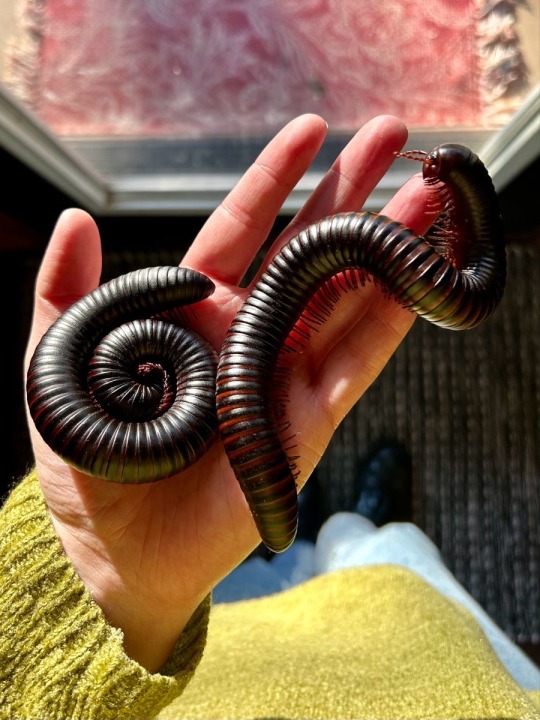
Diet!
One thing to note about GAM is they’re scavengers! They commonly feast on damp and decaying or rotting wood, manure, grass clippings, and decaying fruits. In captivity, a large part of their diet consists of leaf litter and quality millipede substrate. Supplemented with millipede safe fruit and veggies ofcourse! As all millipedes do, GAM require calcium. This calcium should be either given to them by supplementing their soil, or providing cuttlefish bone for them to nibble on over time.

EXTRA !!!
• Millipedes don't have eyes; they use a pair of antennae to sense what's around them!
• GAM are small, and usually confident with handling. However, you should still be careful with holding and handling small animals!
• GAM will die if their soil becomes dry. They require damp soil as that’s how they drink! They also benefit from a small shallow water bowl. Emphasis on small & shallow!
• GAM can live up to 10 years! It’s a big commitment, but worth it in my eyes.
• Their soil must be deep enough for them to fully submerge themselves to molt.
• The body of the giant African millipede has 40 or more body segments, with four legs (two pairs) per individual segment. Each time a GAM molts, it adds one body segment with four legs!
• however being small compared to other things, they’re the largest millipede species alive. They can grow to 1 foot long!
Thank you for listening to my info dump!
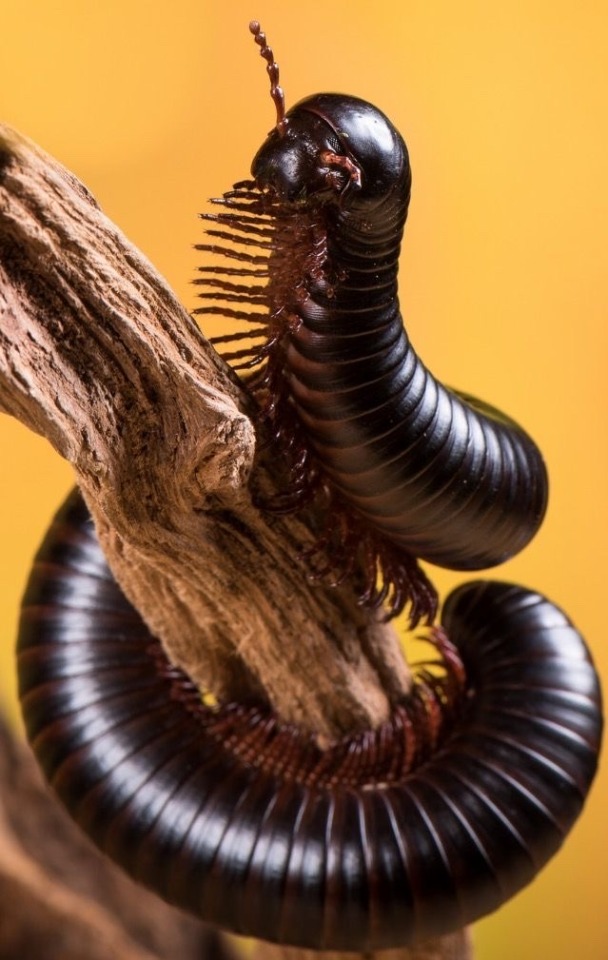
17 notes
·
View notes
Text
Hi everyone, I hate to bring this here but like said in the original thread I’m desperate. I’m scared that there’s something wrong with my cat and we don’t have the money to take her to the vet

More information in the original thread, but basically I’m desperate to get my cat whatever help she needs
I’ll take straight up donations and do commissions both
My cashapp is $robbieutm and my commissions are open on KOFI
If you have PayPal you can donate/pay through KOFI and I accept commission payments through Cashapp
If you can’t Comm or donate please share, I love my cat sm I need to help her
#animal care#animal help#help my cat#pet health#pet help#kofi#cashapp#paypal#pet funding#vet bills#vet stuff#money#commisions open#art commisions#art comms open#kofi commissions#cashapp commissions#i don’t know what else to really tag this as geez
19 notes
·
View notes